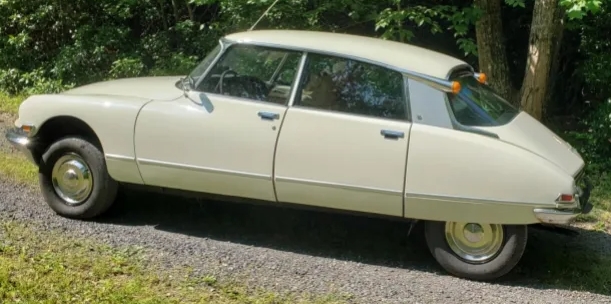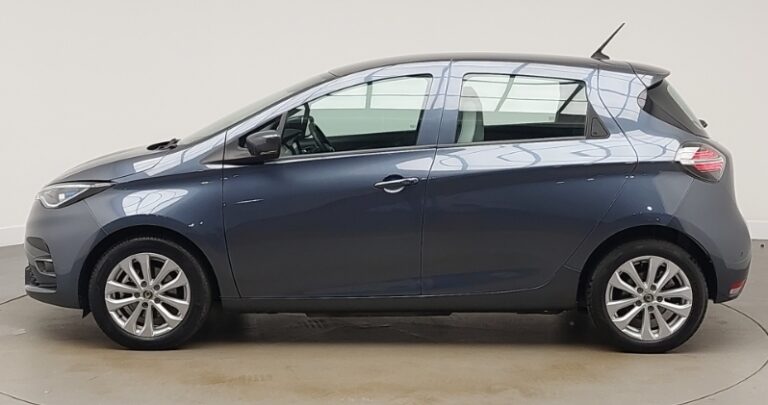A Global Gambler in a Local Game: The Brief and Complicated Evolutionary Story of the Holden Malibu
In the pantheon of iconic Holden vehicles, the Malibu holds a curious and often overlooked position. It wasn’t a V8-powered, rear-wheel-drive hero born on the proving grounds of Lang Lang, nor was it a rugged utility forged for the Australian outback. Instead, the Holden Malibu was a global product, an American-designed sedan drafted into the Australian market to fight a battle in a segment that was already fiercely contested. Its story is not one of roaring success, but of a competent car that arrived at precisely the wrong moment, a symbol of Holden’s difficult transition in its final decade from a local manufacturer to a full-line importer.
For four short years, from 2013 to 2017, the Holden Malibu served as the brand’s primary contender in the mid-size sedan market. It was a strategic play, a well-equipped and comfortable vehicle designed to fill the void left by its unloved predecessor, the Daewoo-sourced Epica. Yet, it lived its entire life in the colossal shadow of its bigger, more charismatic sibling, the VF Commodore, and struggled to carve out a distinct identity against formidable rivals. This is the evolution of the Holden Malibu—a brief but telling chapter in the final pages of Holden’s history.
The Genesis: A Global Solution for a Local Problem
To understand why the Malibu was introduced, one must look at the state of the Holden lineup in the early 2010s. The brand’s mid-size offering, the Holden Epica (2007-2011), had been a commercial and critical failure. Based on a Daewoo platform, it lacked the refinement, performance, and brand cachet to compete with the dominant Toyota Camry, the stylish Mazda6, or the European-engineered Ford Mondeo. Holden needed a credible replacement, and fast.
The solution came from General Motors’ global portfolio. At the time, GM was heavily invested in developing global platforms that could be adapted for various markets, saving immense development costs. The answer for Holden was the eighth-generation Chevrolet Malibu, a car built on GM’s respected Epsilon II platform—the same architecture that underpinned the Opel/Vauxhall Insignia and Saab 9-5.
The choice was logical. The Chevrolet Malibu was a sales success in North America, and its size, features, and front-wheel-drive layout made it a direct competitor to the Camry. For its Australian tour of duty, the car would be sourced from GM’s Bupyeong plant in South Korea. Engineers from Holden were tasked with tuning the suspension and steering to better suit Australian roads and driver expectations, a common practice to imbue global products with a touch of local flavor. The stage was set for the Holden Malibu to make its debut in mid-2013.
.
THIS is GOOD stuff if your car is in need:

.
The Launch: The JG Series (2013 – 2015)
The first iteration of the Holden Malibu, designated the ‘JG’ series, arrived in Australian showrooms with a clear mission: to offer a compelling blend of comfort, technology, and value. Its design was distinctly American, featuring a prominent dual-port grille, muscular body lines, and distinctive quad-taillights that drew inspiration from the Chevrolet Camaro. Holden launched the Malibu in two distinct trim levels: the entry-level CD and the more luxurious CDX.
1. Holden Malibu CD
The base model CD was positioned as the volume seller, aimed at fleet buyers and families seeking a well-specified, affordable sedan. It was offered exclusively with one powertrain combination.
- Engine: 2.4-litre DOHC four-cylinder ‘Ecotec’ petrol engine.
- Power & Torque: 123 kW and 225 Nm.
- Transmission: Six-speed automatic with Active Select (manual shift mode).
- Key Features: The standard equipment list was generous for its time. It included 17-inch alloy wheels, a 7-inch colour touchscreen featuring Holden’s MyLink infotainment system (with Pandora and Stitcher app integration), Bluetooth connectivity, a reversing camera, rear parking sensors, cruise control, automatic headlights, and a passive entry system with push-button start. Safety was also a strong point, with six airbags and electronic stability control contributing to a 5-star ANCAP safety rating.
2. Holden Malibu CDX
The flagship CDX model was designed to appeal to private buyers who wanted more luxury and a choice of engines. It built upon the CD’s foundation with a host of premium appointments.
- Engine Options:
- Petrol: The same 2.4-litre Ecotec petrol engine found in the CD.
- Diesel: A 2.0-litre DOHC four-cylinder common-rail turbo-diesel engine, offering significantly more torque for effortless cruising and improved fuel economy.
- Power & Torque (Diesel): 117 kW and a robust 350 Nm.
- Transmission: Six-speed automatic for both engine variants.
- Key Upgrades over CD: The CDX distinguished itself with 18-inch alloy wheels, leather-appointed seat trim, heated front seats with 8-way power adjustment for the driver, dual-zone climate control, rain-sensing wipers, and LED rear brake lights.
The JG Malibu was praised by critics for its quiet, comfortable ride and well-insulated cabin, making it an excellent long-distance tourer. Its handling was safe and predictable, though it lacked the dynamic sharpness of the Mazda6 or Ford Mondeo. However, the 2.4-litre petrol engine was seen as merely adequate, feeling lethargic under heavy acceleration. The diesel, while noisy on startup, was the pick of the range, providing strong, effortless pulling power.
Despite its competence, the Malibu faced an uphill battle. The mid-size sedan segment was shrinking as buyers flocked to SUVs. More critically, it suffered from a problem of internal competition. A base model VF Commodore Evoke, Holden’s iconic large sedan, was often only a few thousand dollars more expensive. For that small premium, buyers could get a more powerful 3.0-litre V6 engine, the revered rear-wheel-drive layout, and a significantly more spacious interior, all wrapped in the legacy of the Commodore nameplate. The Malibu struggled to convince Holden loyalists to downsize.
The Mid-Life Update: The JH Series (2015 – 2016)
In response to initial feedback and to keep the model fresh, Holden introduced a minor but significant update for the 2015 model year, creating the ‘JH’ series. While visually almost identical to the JG, the key change was under the bonnet of the petrol models.
The underpowered 2.4-litre naturally aspirated engine was replaced across the range by a far more modern and potent powertrain.
- New Petrol Engine: 2.0-litre DOHC four-cylinder turbocharged petrol engine.
- Power & Torque: A substantial 190 kW and 353 Nm.
This single change transformed the Malibu’s character. The new turbo engine, shared with performance variants of the Opel Insignia, delivered a massive 54% increase in power and a 57% increase in torque over the old 2.4-litre unit. It catapulted the Malibu from being one of the least powerful cars in its class to one of the most spirited, offering brisk acceleration and much-improved responsiveness.
The JH series maintained the same two-tier model structure:
1. Holden Malibu CD (JH)
- Now came standard with the powerful 2.0-litre turbo-petrol engine, making the base model a compelling performance-for-price proposition. The 2.0-litre turbo-diesel remained an option.
2. Holden Malibu CDX (JH)
- Also received the 2.0-litre turbo-petrol as standard, with the diesel continuing as an option. The feature list remained largely unchanged from the JG CDX.
The updated turbo engine was universally praised and addressed the car’s biggest dynamic weakness. However, it was not enough to reverse its fortunes. The market trends continued to work against it, and the looming presence of the exceptional VFII Commodore meant the Malibu remained a niche choice for Holden buyers.
The Final Curtain: Discontinuation and Legacy
The Holden Malibu’s time in the Australian sun was short-lived. In late 2016, with sales consistently failing to meet expectations, Holden announced that the Malibu would be discontinued. The final examples were sold in early 2017, marking the end of its four-year run.
Its demise was caused by a perfect storm of factors. The relentless consumer shift towards SUVs decimated the mid-size sedan market. Furthermore, Holden was preparing for the end of local manufacturing in October 2017. The future of the brand’s large and mid-size sedan lineup was to be consolidated into a single, imported model: the German-sourced, next-generation Opel Insignia, which would be sold in Australia as the ZB Commodore. In this new world order, there was simply no room for the Malibu.
The Holden Malibu is remembered today as a footnote in the brand’s history—a competent, comfortable, and well-equipped sedan that was ultimately the right car at the wrong time. It was a product of GM’s global strategy that, while sound on paper, failed to connect with the Australian public. It was neither a true-blue, locally-engineered Holden nor a class-leading import with a unique selling proposition. It existed in a gray area, overshadowed by its legendary big brother and outmanoeuvred by its rivals.
Ultimately, the story of the Holden Malibu is a poignant case study of the challenges that faced Holden in its final years: navigating shifting consumer tastes, managing a complex global product portfolio, and trying to maintain a unique Australian identity in an increasingly homogenized automotive world. While it never achieved greatness, the Malibu stands as a quiet testament to that struggle.







